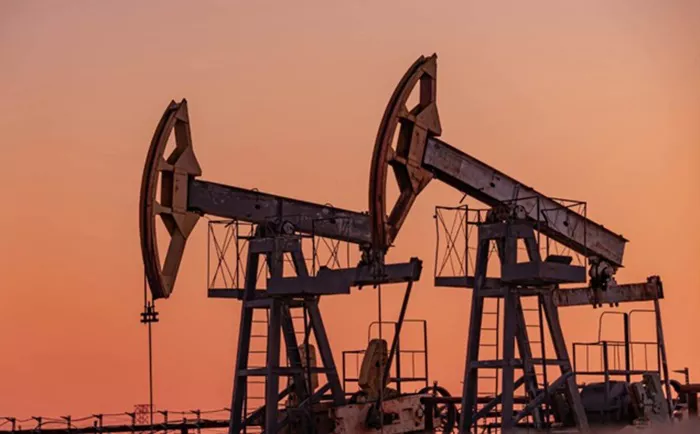In the intricate world of crude oil transportation, railcars play a crucial role in moving vast quantities of oil from production sites to refineries and distribution centers. Among the various types of railcars used for this purpose, tanker railcars are specifically designed to handle the unique demands of transporting liquid cargo. This article provides a comprehensive examination of the capacity of contemporary tanker railcars, detailing their typical volume, influencing factors, design considerations, and implications for the oil industry.
The Capacity of Contemporary Tanker Railcars
Modern tanker railcars used for transporting crude oil generally have a capacity ranging from 25,000 to 33,000 gallons (approximately 95,000 to 125,000 liters). This capacity allows railcars to efficiently transport large quantities of crude oil, making them an essential component of the logistics chain in the oil industry.
Smaller Capacity Railcars: These railcars typically hold around 25,000 gallons (about 95,000 liters). They are often used in regions with lower oil production or where smaller volumes are required. Their design may cater to lighter or less dense materials, adjusting to specific regional or operational needs.
Larger Capacity Railcars: On the higher end, railcars can have capacities up to 33,000 gallons (approximately 125,000 liters). These larger railcars are designed for high-volume transport, ideal for regions with significant oil production and where large-scale logistics are necessary.
Design Specifications
The design and capacity of tanker railcars are influenced by several factors:
1. Tank Design and Materials
The design of the tank within the railcar is critical for ensuring safe and efficient transportation. Tanker railcars are constructed using high-strength steel or aluminum, which provides durability and resistance to the stresses of transportation. The interior of the tank is often coated with protective linings to prevent corrosion and contamination of the crude oil.
2. Structural Considerations
Tanker railcars must meet stringent safety and structural standards to handle the pressures and stresses associated with transporting crude oil. Features such as reinforced hulls, pressure relief valves, and protective insulation are integral to ensuring the safety of the railcar during transit.
3. Regulatory Compliance
Regulations set by organizations such as the Federal Railroad Administration (FRA) and the American Association of Railroads (AAR) dictate the design specifications for tanker railcars. These regulations ensure that railcars are built to withstand the rigors of transportation and meet safety standards for hazardous materials.
See also: What Is the Majority of Crude Oil Products Used For?
Factors Influencing Railcar Capacity
Several factors can affect the capacity of tanker railcars:
1. Regulatory Standards
Regulatory requirements play a significant role in determining the design and capacity of tanker railcars. Safety standards and environmental regulations mandate specific design features and capacity limits to ensure the safe transport of crude oil. Compliance with these regulations often dictates the maximum allowable capacity for a given railcar.
2. Design and Construction
The specific design and construction of a tanker railcar, including its length, width, and tank configuration, directly influence its capacity. Railcars designed for higher capacities often feature larger tanks and enhanced structural supports.
3. Operational Efficiency
Operational considerations, such as the need to accommodate different types of cargo or adjust for various loading and unloading procedures, can impact the capacity of tanker railcars. Railcars must be designed to balance maximum capacity with operational flexibility.
Efficiency and Utilization
Efficient use of tanker railcars is essential for optimizing transportation logistics:
1. Logistical Planning
The capacity of tanker railcars is a key factor in logistical planning for crude oil transportation. Efficient utilization of railcars helps minimize transportation costs, reduce the number of trips required, and streamline the supply chain.
2. Cost Considerations
Higher-capacity railcars allow for greater economies of scale, as transporting larger volumes of crude oil in fewer trips can reduce overall transportation costs. This efficiency is particularly important in the oil industry, where margins can be tight and operational costs significant.
3. Safety and Compliance
Ensuring that tanker railcars are used within their capacity limits is crucial for maintaining safety and regulatory compliance. Overloading a railcar can lead to increased risks of accidents and environmental hazards. Adhering to capacity limits helps prevent these risks and ensures safe transport.
See also: What Is a Viable Method of Separating Gasoline from Crude Oil?
Implications for the Oil Industry
The capacity of tanker railcars has several implications for the oil industry:
1. Transportation Logistics
Efficient railcar capacity impacts the overall logistics of crude oil transportation. Larger-capacity railcars can reduce the number of railcars needed for a given volume of oil, optimizing rail network usage and reducing transportation costs.
2. Economic Efficiency
The ability to transport larger quantities of crude oil per railcar can lead to significant cost savings for oil producers and refiners. By maximizing railcar capacity, the industry can achieve better economies of scale and improve its overall financial performance.
3. Environmental Impact
Transporting crude oil by rail is often considered more environmentally friendly compared to other methods, such as trucking. Utilizing higher-capacity railcars helps reduce the number of railcars required, which can decrease the overall environmental footprint of oil transportation.
Conclusion
The capacity of contemporary tanker railcars for crude oil transport typically ranges from 25,000 to 33,000 gallons (approximately 95,000 to 125,000 liters). This capacity range is influenced by design specifications, regulatory standards, and operational efficiency considerations. Understanding these factors is essential for optimizing transportation logistics, reducing costs, and ensuring safety in the oil industry. Efficient use of tanker railcars not only enhances logistical performance but also contributes to the economic and environmental efficiency of crude oil transportation. As the industry continues to evolve, advancements in railcar design and technology will play a critical role in meeting the growing demands of global oil transport while adhering to safety and environmental standards.
Related Topics:

